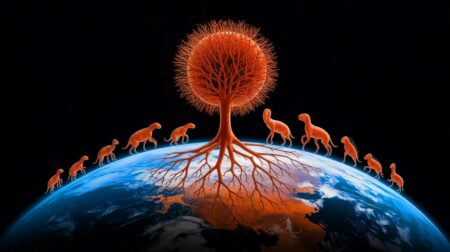An apocalypse is upon insects worldwide as legions of them are succumbing to a host of stresses from intensive agriculture to climate change. Even if you aren’t a fan of creepy-crawlies, this should alarm you as insects perform vital ecological functions, not least by acting as potent pollinators.
In fact, three-quarters of food crops and four out of five wild plants depend on bees, wasps, flies, butterflies, moths and beetles to reproduce. The question is what happens if most of these insects disappear from agricultural and natural habitats alike?
A team of scientists at the Julius-Maximilians-University in Würzburg, Germany, decided to find that out by exploring how a changing climate and intensive land use affect the diversity of pollinating insects at local and landscape scales across the German state of Bavaria.
The scientists examined more than 3,200 pollinator species from 179 locations in various habitats from forests to grasslands to cultivated lands to urban areas. As bees, flies, beetles, butterflies, and moths respond differently to increasingly warmer and dryer conditions, pollinators tend to become more homogenized in warmer climates at the expense of diversity, the scientists report.
“[I]n addition to the importance of floral resources and the negative effects of land use intensification, climatic conditions play an increasingly important role for the maintenance of pollinator diversity,” observes Prof. Ingolf Steffan-Dewenter, who works at the university’s Department of Animal Ecology and Tropical Biology.
“For example, the combination of high temperatures and low precipitation negatively affected total pollinator diversity, while bee richness in urban areas was negatively affected by higher mean temperatures,” the scientist adds.
Importantly, however, in landscapes that have higher proportions of forested areas more diverse pollinator communities can continue to thrive as forests “can cushion the effects of climate warming to a certain extent,” in the words of Cristina Ganuza, a PhD student at the university who was a key member of the research team.
“We conclude that a large proportion of forested land in the landscape could serve as refuge for insects from climate warming. This is likely because forests and forest edges provide largely natural conditions which buffer extreme heat and drought compared to more human-influenced habitats,” Ganuza says.
In order for ecosystems to function properly, a high diversity of pollinators is needed as various plant species depend on various pollinators. “However, the combination of ongoing climate change and current land use will only allow certain pollinator species to survive in different habitat types,” Ganuza warns.
In urban landscapes where temperatures are especially high partly as a result of the heat island effect, greening larger areas can ensure that insects find safe havens in towns and cities. “This could lead to more bee species being able to live in urban areas,” the biologist explains.
Did you like it? 4.6/5 (23)








